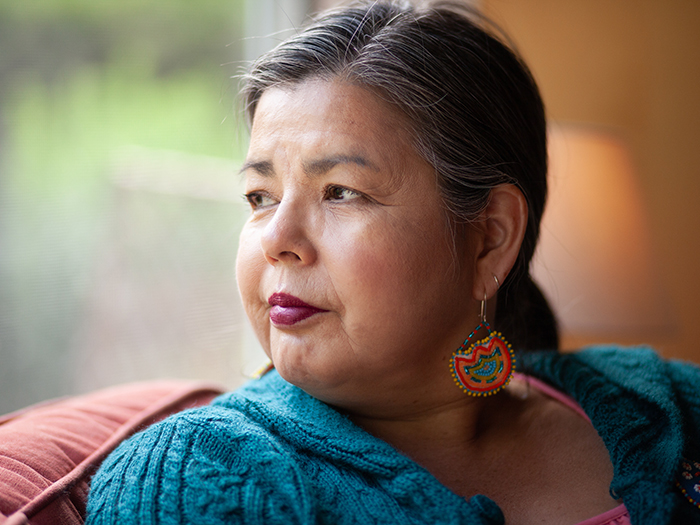Social Work Student Launches Community Art Project to Honour Children from Residential Schools
When Deborah Young learned that the unmarked graves of 215 children had been discovered at the former Kamloops Residential School and, more recently the 751 unmarked graves Marieval Indian Residential School at Cowessess First Nation in Saskatchewan, she felt a familiar sense of sadness and grief.
“It hurt me. I felt like I was with those children,” says Young, a PhD candidate in the School of Social Work. “I am a backseat passenger in the car driving the highway of life because of my parents’ experiences in residential schools. I came out of that trauma which those schools inflicted in our community.”
Young is a Cree from Manitoba and a visitor on Algonquin unceded traditional territory. Her mother was taken from the Peguis First Nation when she was 9 years old and placed in the Brandon Residential School. Her father was taken from the Opaskwayak Cree Nation when he was only 5 and placed at residential school in Saskatchewan.
“He was a 5-year-old boy who only spoke Cree and he was terrified when he saw the huge building and the nuns,” recalls Young. “He wanted to go home, so he ran away into a potato field and got lost. He sat in that field and cried until they brought him back to the school. It’s unimaginable. My dad survived but many did not.”
Young says the discovery of unmarked graves in Kamloops, Cowessess First Nations, and the others yet to come have come to symbolize all of the children who died in residential schools across Canada. In memory of all the lost and missing children who attended these schools, she is launching a communal beading project at Carleton, inviting faculty, staff and students to join together to create 215 beaded baby vamps, which would traditionally be the top of a moccasin.

“For me, 215 has became a symbolism of a country awakening from its colonial past to its colonial present,” says Young.” The voices of all of those children are finally being heard. The 215 started the awakening but we always knew there would be more.”
Young explains that participants will bead single vamps to signify the incomplete journey of the children who never made it home.
She sees art is a powerful means of resistance and a tool for building awareness. When she was a student at the University of Manitoba, she led a quilt-making project in honour of the Missing and Murdered Indigenous Women and Girls. The beaded quilt now hangs at the university.
“That was a really powerful experience and I wanted to bring that here,” says Young. “There is a saying that beading is medicine and it truly is. That’s the beauty of a community coming together and beading.”
Young is hosting three online beading sessions over the summer in collaboration with the Centre for Indigenous Initiatives. Interested faculty, staff and students can email her at DeborahGYoung@cmail.carleton.ca and she will send them the beading supplies for a 5-centimetre square baby vamp.
“I’m not really looking for donations, I’m looking for people to get out and bead,” she explains. “That’s the biggest contribution you can give. I just want to engage the community.”
The call for beaded baby vamps will end on September 30, which has been designated Orange Shirt Day in honour of residential school survivors. Young is also collaborating with the School of Social Work and the Centre for Indigenous Initiatives on a panel discussion of residential school survivors to be held that day.
The 215 vamps will eventually be displayed at the School of Social Work, along with a commemorative plaque describing the history of the project and residential schools.
“As social workers, our history is entwined with the residential schools and for us, this is a really helpful project for opening up that conversation and thinking about what reconciliation could look like,” says the school’s director, Prof. Sarah Todd.
In 2018, the school supported the development of a Decolonization, Reconciliation, and Indigenization Committee, of which Young is a member. Indigenous knowledge and experiences are beginning to be reflected in both undergraduate and graduate courses.
Deborah Young welcomes further conversation about bringing Indigenous experiences and knowledge into the School of Social Work, as well as the university as a whole.
“One of the things I would love to see come out of this work is to get more Indigenous students engaged,” says Young. “I am working on establishing an Indigenous students’ Circle in Social Work where Indigenous students can come together and share ideas and advice with each other and with the administration.”
Story by Karen Kelly